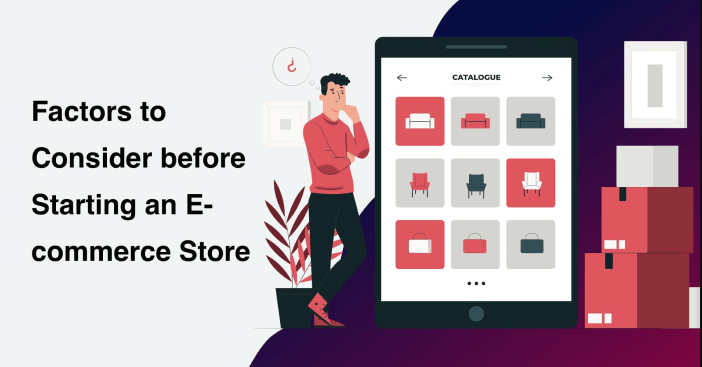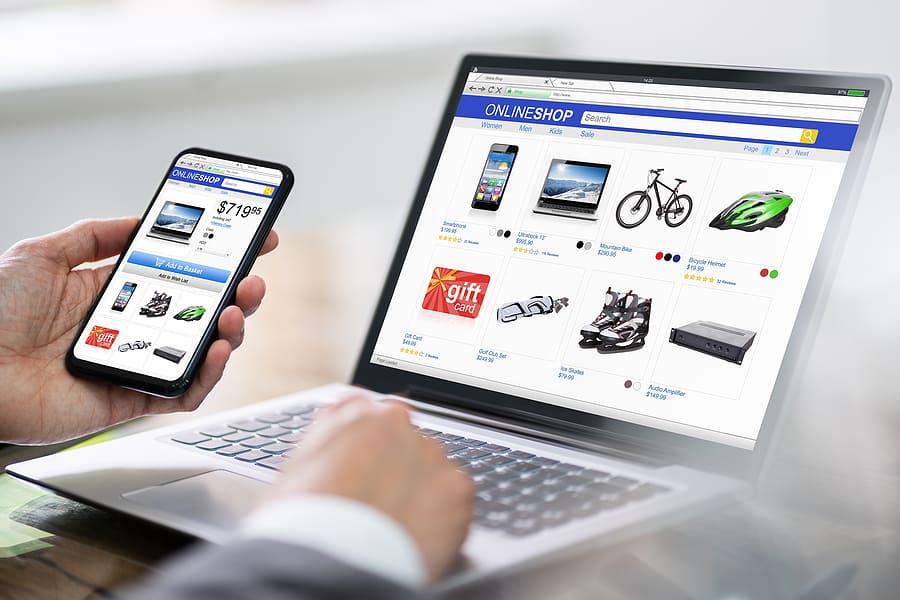
Are you interested in starting an e-commerce store but unsure where to start? Setting up an online store can be a straightforward process with the right guidance and resources. There are several steps that need to be taken before you can launch your online store, but with a little bit of effort and dedication, you can get started in no time.
6 Things to Consider If You Want To Start An E-commerce Store
This article will give you six things to do if you want to start an e-commerce store, from picking the right platform to managing payments and marketing your business. With these steps in hand, you’ll be well on your way to finding success as an online entrepreneur!
1. Choose An E-Commerce Platform
The first step in starting an e-commerce store is choosing a platform that meets your needs and budget. It is a vital step in developing an online e-commerce store, so you must examine your options. An e-commerce platform provides a range of features and services that allow you to build, manage, and market your online store. It’s important to select the right one for your needs as it will be integral in how successful your business can become.
Another benefit of choosing an e-commerce platform is that it can provide a more user-friendly experience than developing a custom website from scratch. Many platforms are easy to use and come with tutorials, so you can quickly set up your site and start selling immediately. Additionally, many e-commerce platforms support marketing activities like SEO optimization, email campaigns, advertising tools, and analytics tracking.
Finally, with an e-commerce platform, you don’t have to worry about handling security and compliance issues yourself – most platforms will already have measures in place to help protect customer data and adhere to laws about online sales. Choosing the right platform can help ensure that your store is secure, reliable, and compliant with regulations. Especially a headless e-commerce solution is the most reliable and safest option when it comes to choosing an eCommerce platform for your store.
2. Get A Domain Name
If you’re looking to start an e-commerce venture, getting a domain name is one of the most important steps. A domain name is your website address and can be used to identify and market your business online. By having a unique web address, customers will be able to find and access your store easily.
A domain name also provides credibility and trustworthiness for potential customers. It’s much easier for people to trust a business when they have a recognizable domain name; this assures them that the website isn’t fake or malicious in any way. Additionally, having an established domain name allows you to create email addresses associated with your brand, making it easier to communicate with customers and vendors.
Having a domain name also makes it easier for customers to remember your website address and return to it in the future. If you choose a memorable and easy-to-remember domain name, customers will be more likely to come back again and again.
3. Design Your Store

When starting an e-commerce store, designing your store is a critical step in the process. The look and feel of your website are essential for creating an engaging user experience and providing customers with the information they need to make their purchase decisions. Your website should be designed in a way that reflects your brand identity, provides customers with easy navigation and allows them to quickly find the products they’re looking for. A great design also helps to establish trust with your visitors by demonstrating that you have taken the time and effort to create a professional environment for them.
4. Manage Payments
By managing payments properly, including the ability to send money through Paypal, you can ensure that all transactions are secure and successful. This helps protect both your customers and your business from potential fraud or identity theft. Additionally, proper payment management will ensure that all payments are processed quickly and accurately so that customers get their products on time.
You should also consider how you will accept different payment methods when setting up an online store. With so many options available (credit cards, PayPal, Apple Pay, etc.), it’s important to have flexible payment options that make it easy for customers to purchase from your store. This helps increase sales and customer satisfaction, resulting in more repeat customers.
Finally, managing payments properly allows you to track expenses associated with running an e-commerce store. Knowing how much money is coming in and going out can help you adjust your pricing accordingly, as well as provide insight into what areas of your business need improvement or investment.
5. Market Your Store
Once your store is set up, it’s time to start getting the word out! Promote your business on social media platforms like Instagram or Facebook, create content such as blog posts, and consider running ads to reach a wider audience. You’ll also want to ensure you have an email list to keep in touch with customers about upcoming products and promotions.
6. Measure Results
The final step is to measure the success of your store. Keep track of important metrics such as website traffic, conversion rates, customer feedback, and revenue to determine which areas need improvement. This will help you adjust and better understand what works best for your business.
By following these six steps, you’ll be ready to launch your e-commerce store in no time! Having a successful online store requires dedication and hard work, but anyone can become an entrepreneur with the right resources.
Read More:6 Proven Strategies for Boosting Your Ecommerce Sales





